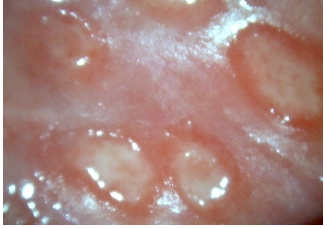Check out today’s Step 2 CK Qmax Question Challenge.
Know the answer? Post it in the comments below! Don’t forget to check back for an update with the correct answer and explanation (we’ll post it in the comments section below).
A 56-year-old man with erectile dysfunction and hypertension presents to his doctor with aching low back pain. He says that the back pain has grown in intensity over the past 2 months and is now a 7 of 10 in intensity. The patient denies any back trauma or recent heavy lifting. He says the back pain does not radiate and is relatively constant in nature. His temperature is 37.2°C (98.9°F), heart rate is 100/min, respiratory rate is 14/min, and blood pressure is 140/80 mm Hg. On physical examination his back is atraumatic, and the pain does not increase in intensity with percussion or palpation of the lower back. There is no costovertebral angle tenderness. The patient’s laboratory values are significant for alkaline phosphatase of 800 U/L and prostate-specific antigen of 12 ng/mL (normal: 0-4 ng/mL).
Which of the following is the most likely location of the primary lesion?
A. Immature prostatic muscle cells
B. Lumbar vertebral body
C. Peripheral zone of the prostate
D. Seminal vesicle
E. Transition (periurethral) zone of the prostate
———————–
Want to know the ‘bottom line?’ Purchase a USMLE-Rx Subscription and get many more features, more questions, and passages from First Aid, including images, references, and other facts relevant to this question.
This practice question is an actual question from the USMLE-Rx Step 2 CK test bank. Get more Step 2 CK study help at USMLE-Rx.com.




C
C
c
C
C
There fore is palpable by DRE
C.
The correct answer is C. This patient has prostatic carcinoma and a bony metastasis to the spine. The peripheral zone, or outermost part, of the prostate is the site of >75% of prostate cancers. The posterior part of the peripheral zone is the most common site, making digital rectal examination helpful in detecting this common cancer.
A is not correct. Immature muscle cells are the origin of the most common pediatric prostatic neoplasm. Rhabdomyosarcomas are rare in adults and would not metastasize to the skeleton.
B is not correct. The patient’s back pain is likely secondary to a metastatic lesion to the spine, not a primary spinal lesion. The elevated prostate-specific antigen makes a primary lesion in the prostate the more likely scenario. Metastatic prostate cancer bone lesions are usually osteoblastic in nature.
D is not correct. The seminal vesicle is a common site of local prostate cancer extension. The base of the bladder and the ureters are other sites of local invasion. Because of the rectovesical fascia, the rectum is not commonly invaded.
E is not correct. The transition (periurethral) zone of the prostate is the most common site of benign prostatic hyperplasia. The periurethral location is why this disease, and not prostate cancer, often presents with obstructive symptoms.